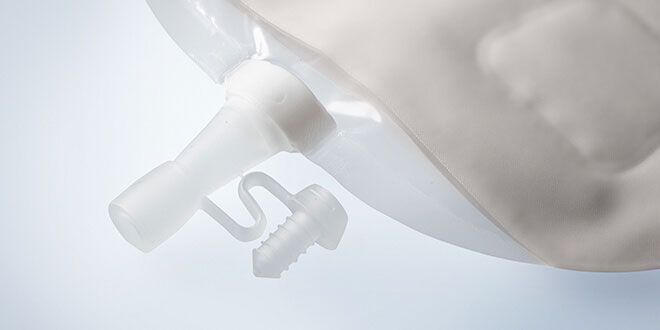The Urinary Function
Do you know how your urinary function works? Understanding how urine is produced and passed from the body will help you comprehend what is involved in a urostomy.
Anatomy of the urinary system
The urinary system consists of the kidneys, ureters, the bladder and the urethra, which all have different but important functions:
- Kidneys: two bean-shaped organs that filter waste and impurities from the blood and produce our urine.
- Ureters: two thin tubes that transport urine from the kidney to the bladder.
- Bladder: a hollow muscular organ that collects and stores urine produced by the kidneys, until it is excreted via the urethra.
- Urethra: the tube that transports urine from the bladder out of the body when you expel urine.
- Sphincter: a muscle that controls the opening of the bladder to the urethra.
Once urine is produced by the kidneys, it travels through the ureters to the bladder where it is stored and afterwards released from the body through the urethra. When the urination reflex occurs, the bladder muscle contracts and the sphincters relax, allowing the urine to flow out of the body. If a problem occurs within the bladder, it will be necessary to create a new system for letting the urine to be passed from the body.
What is a urostomy?
A urostomy is a general term which describes a surgical procedure that diverts urine from a defective bladder to a section of your small intestine. This operation brings an isolated part of your intestine – around a six to eight inch piece of the small bowel - onto the surface of your abdomen in the right-hand side. This isolated part of your intestine is then brought through a surgically created opening called an ostomy. The ureters are detached from the bladder and reattached to the isolated section of the intestine, so the urine is passed from the body through the ostomy.
After your urostomy has been created, you will no longer be able to control your urine flow. Because a urostomy does not have a sphincter muscle to provide the tight seal around the bladder when closed, you have no voluntary control over when to urinate. Therefore, urine will generally drain constantly outwards and drop into the pouch on your abdomen. A pouch must thus be worn at all times to collect your urine.

What to expect – details matter
How should your ostomy look? And how should it feel? Knowing what to expect from your urostomy is important. A healthy ostomy is moist and red or pink in color. The ostomy has no nerve endings, so it will not hurt when touched. The ostomy can be large and swollen after surgery, however, it will shrink to a smaller size within a few weeks – this is completely normal.
Your ostomy will most likely stick out from the abdomen about 1 inch. This is where urine will now drain from your body.



